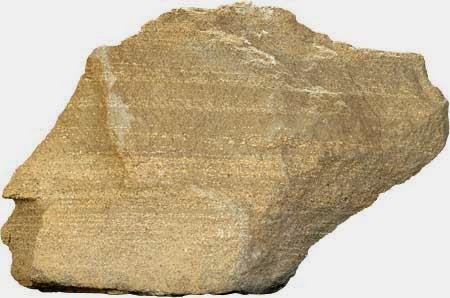Sandstone
Sandstone is a sedimentary rock which consist of a variation of minerals and mainly sand grains with a diameter of 63 micrometer to 2 millimeter. The main mineral present in sandstone is quartz. This mineral causes the large hardness of this material and with this hardness it is easy distinguishable from limestone and clay stones. Its color can vary from yellow brownish to grey. (due to weathering) If iron is present in this rock type it will give a red color.
Formation
The grains of sand in a sandstone are usually particles of mineral, rock, or organic material that have been reduced to "sand" size by weathering and transported to their depositional site by the action of moving water, wind, or ice. Their time and distance of transport may be brief or significant, and during that journey the grains are acted upon by chemical and physical weathering.
If the sand is deposited close to its source rock, it will resemble the source rock in composition. However, the more time and distance that separate the source rock from the sand deposit, the greater its composition will change during transport. Grains that are composed of easily weathered materials will be modified, and grains that are physically weak will be reduced in size or destroyed.[2]
References
- NEN-EN-ISO 14688-1:2019
- https://geology.com/rocks/sandstone.shtml
Sandstone

| Group | Clastic sedimentary rock |
| Texture | Coarse grained |
| Clasts | 0.06mm-2mm |
| Hardness | Very hard |
| Color | Brown, yellow, red, grey, pink, white, black or something in between |
| Minerals | Quartz or feldspar |
| Touch | Rough |
| Image | Sandstone |
|---|
Contents